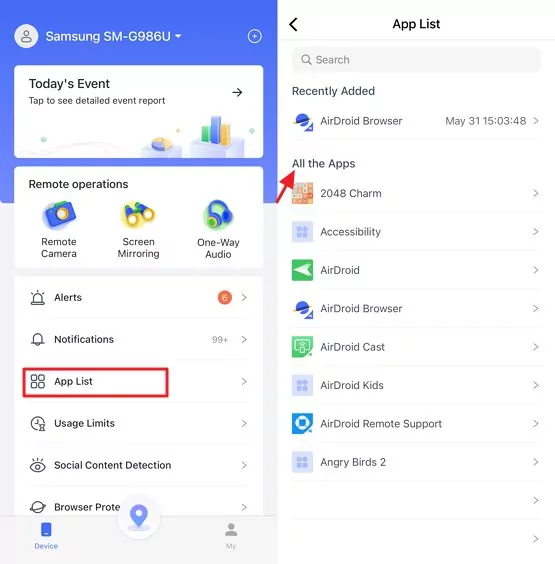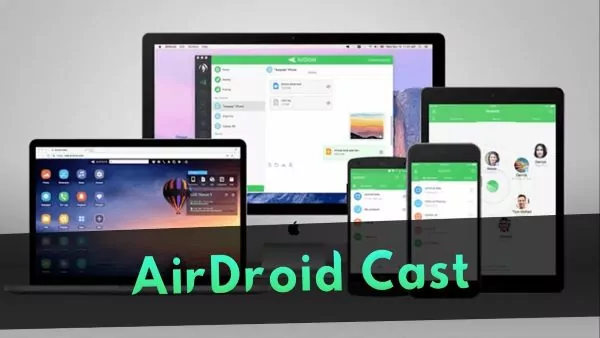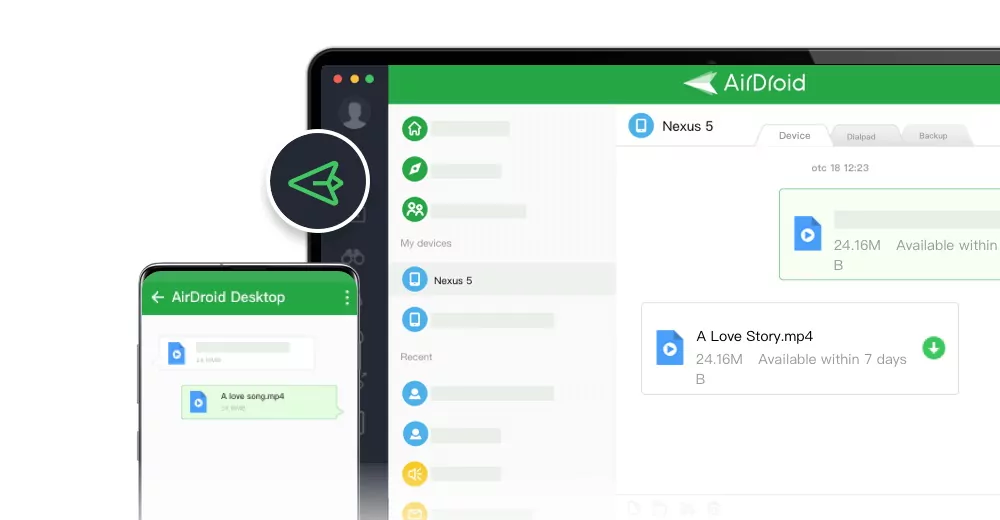How to Detect Hidden Listening Devices with iPhone [10 Ways]
There are certain use cases for the iPhone, especially to protect users' privacy, that you may never have thought of before. For instance, users can detect hidden listening devices using their iPhones. If you are wondering how this works, or if there is any native feature for that. Please read on.
Certain workarounds and third-party apps allow iPhone users to detect concealed or suspicious devices. These apps use the device's camera or sometimes microphone to analyze sound waves and identify unusual patterns or frequencies.
- Conduct a Physical Search
- Make a Call to Listen for Interference
- Use Flashlight to Check for Two-way Mirrors
- Use The Camera to Look for Infrared Lights
- Use Your iPhone's Microphone
- Try Camera Finder Apps
- Use an RF Detector
- Look for Strange Wi-Fi Signals
- Utilize a Thermal Imaging Device
- Check for Suspicious Listening Apps
Can I Use My iPhone to Detect Hidden Listening Devices?
Yes, your iPhone has the potential to assist in the detection of concealed audio surveillance devices. While it is generally advised to employ specialized gear for identifying bugs or eavesdropping instruments, your iPhone can serve as a helpful alternative when such equipment is not available.
How to Detect Hidden Listening Devices with iPhone?
If you often visit hotels, rental properties, or public restrooms casually or on vacation, you should be proactive and vigilant to ensure your privacy isn't compromised. To ensure your safety, here are some steps to detect hidden listening devices using an iPhone:
1Conduct a Physical Search
The first and most obvious step to detecting hidden listening or spying devices is to conduct a thorough physical search of the area you suspect might be compromised. Listening devices are often installed inside common hiding spots such as smoke detectors, air vents, and wall plugs.
2Make a Call to Listen for Interference
Another effective method to detect hidden listening devices is to use your iPhone to make a call and listen for interference. Make sure to turn off the television, speakers, radio, or other electronic devices around you. If your iPhone is still able to detect interference in the call, it could be a sign that there is a hidden listening device nearby.
3Use Flashlight to Check for Two-way Mirrors
Some hidden cameras utilize a one-way mirror effect, that looks like a regular mirror from one side while allowing someone to observe you from the other.
Two-way mirrors are often placed in locations where they can go unnoticed, such as public washrooms, dressing rooms, retail stores, or meeting Rooms.
Switch off the Lights and turn on Your iPhone’s Flashlight. Hold your iPhone’s flashlight directly against the mirror’s surface.
Look for Gaps. If the mirror is a two-way mirror, you’ll see through it, or notice a gap between the light and the mirror surface. A regular mirror will reflect the light directly back at you.
4Use The Camera to Look for Infrared Lights
Some spy devices use infrared (IR) lights for night vision. You may not notice such light; however, Your iPhone's camera can help detect faint purple or white glows from potential camera locations in a dark room. To detect infrared light, use your iPhone's camera in a dark room and point it at the suspected location. If the light shows up, you can be fairly certain that a spy device is present.
5Use Your iPhone's Microphone
Your iPhone’s microphone is another safe and effective tool for detecting hidden listening devices, especially those that emit sounds or interference.
● Find a quiet environment.
● Navigate to the built-in Voice Memos app or any other recording app on your iPhone.
● Turn on the recording and move around the room. Pay close attention to any static, buzzing, or clicking sounds that the microphone picks up, which could indicate the presence of a hidden listening device.
Note Hidden listening devices sometimes emit subtle noises that can be picked up by your iPhone’s microphone, especially if the device is actively transmitting or recording.
6Try Camera Finder Apps
A number of iPhone apps can be used to detect hidden cameras and, by extension, listening devices. In spite of the questionable efficacy of basic camera finder apps, some do offer more advanced features.
Some apps can detect wireless signals and alert the user if a hidden camera is detected. It also allows users to take a snapshot and record audio and video evidence of any suspicious devices.
7Use an RF Detector
For a straightforward approach consider using a dedicated Radio Frequency (RF) detector. These handheld devices can pick up on signals emitted by pesky listening devices operating on specific frequencies. If you are quite sure someone on the other side is listening or watching you, follow this.
● Go ahead and get your RF (radio frequency) detector.
● Now switch off electronic devices that broadcast radio signals.
● Turn on the RF detector.
● Slowly move around the room and keep the device near objects, walls, and suspicious other places.
● Pay attention to any spikes in the detector’s readings, which could indicate the presence of a hidden listening device.
● Spend extra time scanning areas where listening devices are likely to be hidden, such as power outlets, smoke detectors, and electronic appliances.
8Look for Strange Wi-Fi Signals
Most spying devices often require an internet connection through Wi-Fi to transmit data. You can use your iPhone to detect unusual Wi-Fi signals in your vicinity.
● Navigate to the Settings app on your iPhone and open the Wi-Fi section.
● Turn on Wi-Fi and scan to see available Wi-Fi networks.
● Pay attention to any unfamiliar or suspicious networks, especially those with strong signals.
When you see any signals that don't sound right, it is probably a spy device. Disconnect it and let the authorities know about it.
9Utilize a Thermal Imaging Device
If you face difficulty in identifying objects, you can utilize a thermal imaging device to detect and visualize heat signatures emitted by hidden objects.
Listening devices, like any electronic device, generate heat during operation. By identifying anomalies in the thermal image compared to the surrounding environment, you can potentially locate hidden listening devices.
10Check for Suspicious Listening Apps
Previously mentioned workarounds aren't foolproof. You need robust solutions to prevent unauthorized surveillance in your personal space. AirDroid Parental Control is a reliable and efficient app that offers comprehensive features particularly designed to protect user privacy. It also helps parents identify any suspicious listening apps installed on their child's device and allows them to block access to these apps if needed.

Where Are Hidden Listening Devices Usually Placed?
Even though hidden listening devices are typically small in size and easily stowed almost anywhere still, some locations are more favored by those seeking to eavesdrop. Here's a rundown of common hiding spots to keep an eye on:
Electrical outlets and power strips are ideal hiding spots for listening devices due to their inconspicuous nature. Spy devices can be embedded within the casing of a power strip or hidden behind the outlet cover.
Smoke detectors and fire alarms are often positioned in central, elevated locations, providing a broad range of audio surveillance. Sometimes bugs are hidden inside the casing of ceiling-mounted smoke detectors. Wall-mounted fire alarms can also conceal small listening devices.
Wall clocks and picture frames are common household items that can easily blend into any environment, making them perfect for hiding listening devices. Make sure to check the wall clock as hidden devices may be concealed within the mechanism or battery compartment of a wall clock.
Furniture and fixtures provide ample space to conceal listening devices without arousing suspicion. For instance, it’s easy to place a bug underneath tables, chairs, or desks. Plus, listening devices can be attached to the back of picture frames, concealed by the frame and backing.
There are a variety of other hiding spots for such devices, including ventilation systems, air vents, office supplies, plants, and decorations.
Types of Hidden Listening Devices You Need to Beware
There are numerous types of hidden listening devices, each presenting its own set of challenges to users in terms of privacy and detection. It is important to be aware of the different types of devices, such as pinhole cameras, hidden microphones, and wireless transmitters. Additionally, such devices can appear as everyday objects, making it difficult to detect them. Here are some common types of hidden listening devices.
Wireless Microphones
Wireless microphones are small, battery-operated devices that can transmit audio signals over a distance. They are often used for covert surveillance because they can be easily concealed and provide real-time audio monitoring.
Wired Microphones
Wired microphones are typically connected to a recording device or transmitter via a physical wire. While they require a power source and are slightly more challenging to conceal due to the wiring, they are still widely used for covert listening. To detect them, inspect your surroundings for irregular wires or adjustments, and use an audio jammer to disrupt their functionality.
GSM Bugs
GSM bugs are prevalent listening devices that function similarly to cell phones and utilize cellular networks to transmit audio. These devices can be remotely activated and monitored from anywhere in the world, making them highly effective for long-distance eavesdropping. GSM bugs are often hidden in everyday objects such as power adapters, Air vents, or smoke detectors.
Miniature Voice Recorders
Miniature voice recorders are small, portable devices that can record audio locally. They can be easily hidden in pens, keychains, or small household items due to their compact size and can store hours of audio for later retrieval. Conduct thorough physical searches of your environment and use a thermal imaging device to spot heat emissions from active devices.
USB Chargers
Some USB chargers are designed with built-in listening devices. These devices can be plugged into any power outlet, making them inconspicuous and difficult to detect.
Spy Pens
What appears as a regular pen can actually be used as a covert listening device. They are equipped with tiny microphones and storage capabilities, making them effective tools for discrete recording.











Leave a Reply.